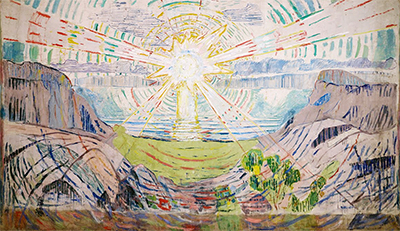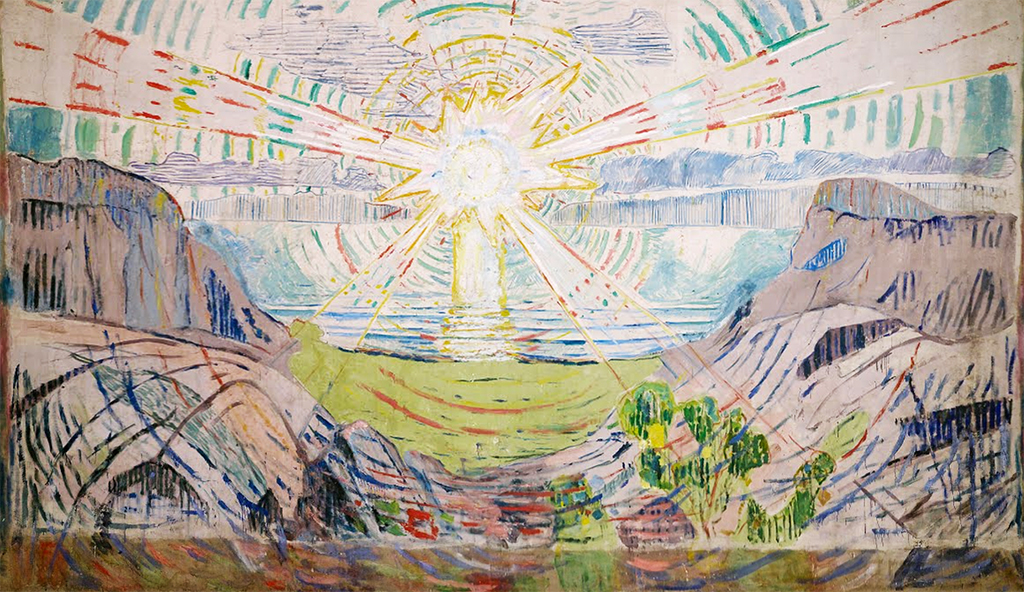The Sun, by Edvard munch, is considered by many as one of the greatest works of modern mural paintings. The enormous painting currently occupies a central spot at the Oslo University assembly hall. It stands tall in a central position as an undeniable display of the power of imagery.
The painting pictures the sun as it spreads out large rays of light in every direction to illuminate the entirety of a northern landscape. The rays flow down the ocean, touching bare rocks and a strip of greenery that separates the sea and land. You can almost not distinguish the sun from the waterfall. In a white ball of light, it shines from the heavens and pours to the sea, creating the impression that the sun is melting down to the earth. Munch also manages to capture the rays splitting into different color variations as they emerge from a bright white ball of light. An observer can clearly see as they change from white to yellow to red, blue then green as they extend towards the vast horizon. If you focus your attention, you'll notice the clear, straight horizon line as well, dividing the sky from the water. The painter also managed to bring out the sun's circular movements, giving out the feeling that the picture is moving back and forth.
It has this pull that almost draws the observer towards it. Initially, the painting was proposed to be a Nietzschean mountain of man, rising towards a sky covered by the sun. However, upon reflection and following advice from friends, the painter relinquished the controversial idea and instead chose to depict the sun in all its glory, in this pure, intense, and powerful form. The painting was clearly more colorful when compared to his previous work, which had a more morbid, melancholic theme. This can be attributed to the fact that it was painted in the year 1909, after Munch has come back from hospital, battling acute anxiety and excessive drinking. His paintings during the time are described as being harmonious with bold, vital brush strokes.
Inspiration for the painting can be said to be drawn from various painters of the time. The shafts of light can be affiliated with the German expressionism of Die Brucke. The symmetry of the painting evokes some elements of Ferdinand Holdler's visions. And Munch's avant-garde and abstractness can also be compared to Wassily Kandinsky, as he symbolically expresses his fascination with the sun as the source of all life. The Godlike complex is apparent as the sun shows its authority as a focal point of life. It has its hand on everything from the sea to the rocks, reaching out to eternity and declaring its stance as the main provider.





